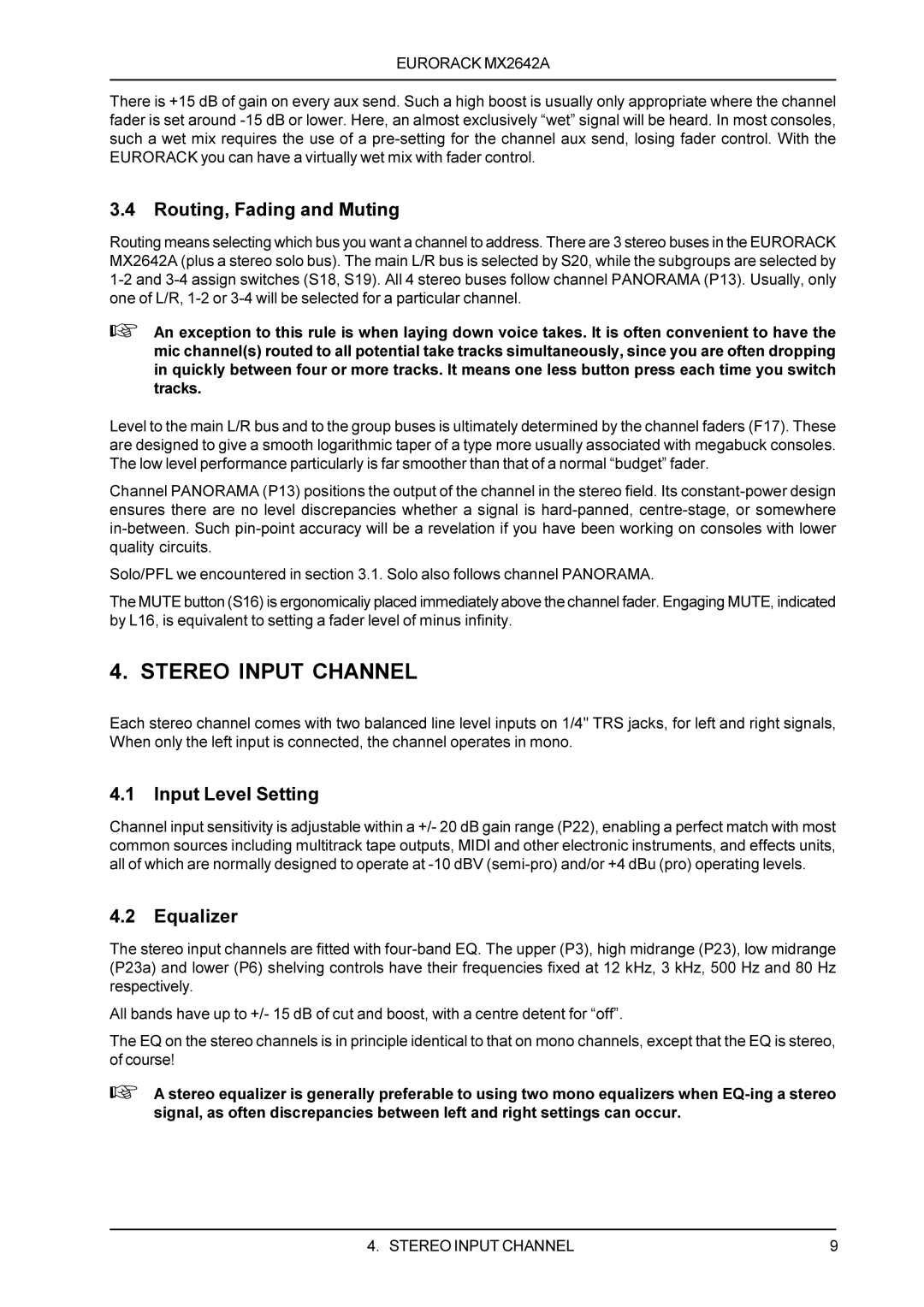
EURORACK MX2642A
There is +15 dB of gain on every aux send. Such a high boost is usually only appropriate where the channel fader is set around
3.4Routing, Fading and Muting
Routing means selecting which bus you want a channel to address. There are 3 stereo buses in the EURORACK MX2642A (plus a stereo solo bus). The main L/R bus is selected by S20, while the subgroups are selected by
+An exception to this rule is when laying down voice takes. It is often convenient to have the mic channel(s) routed to all potential take tracks simultaneously, since you are often dropping in quickly between four or more tracks. It means one less button press each time you switch tracks.
Level to the main L/R bus and to the group buses is ultimately determined by the channel faders (F17). These are designed to give a smooth logarithmic taper of a type more usually associated with megabuck consoles. The low level performance particularly is far smoother than that of a normal “budget” fader.
Channel PANORAMA (P13) positions the output of the channel in the stereo field. Its
Solo/PFL we encountered in section 3.1. Solo also follows channel PANORAMA.
The MUTE button (S16) is ergonomicaliy placed immediately above the channel fader. Engaging MUTE, indicated by L16, is equivalent to setting a fader level of minus infinity.
4. STEREO INPUT CHANNEL
Each stereo channel comes with two balanced line level inputs on 1/4" TRS jacks, for left and right signals, When only the left input is connected, the channel operates in mono.
4.1Input Level Setting
Channel input sensitivity is adjustable within a +/- 20 dB gain range (P22), enabling a perfect match with most common sources including multitrack tape outputs, MIDI and other electronic instruments, and effects units, all of which are normally designed to operate at
4.2Equalizer
The stereo input channels are fitted with
All bands have up to +/- 15 dB of cut and boost, with a centre detent for “off”.
The EQ on the stereo channels is in principle identical to that on mono channels, except that the EQ is stereo, of course!
+A stereo equalizer is generally preferable to using two mono equalizers when
4. STEREO INPUT CHANNEL | 9 |
